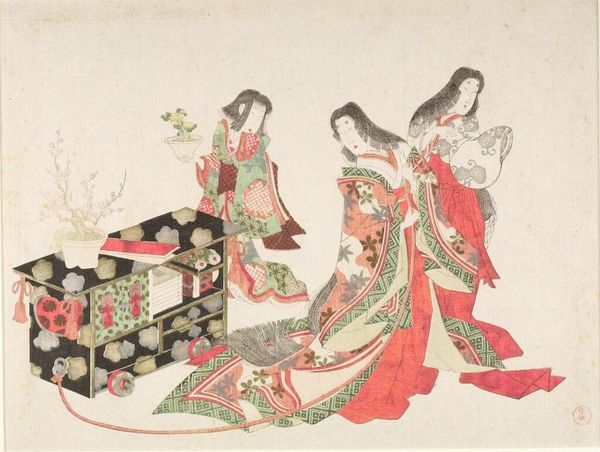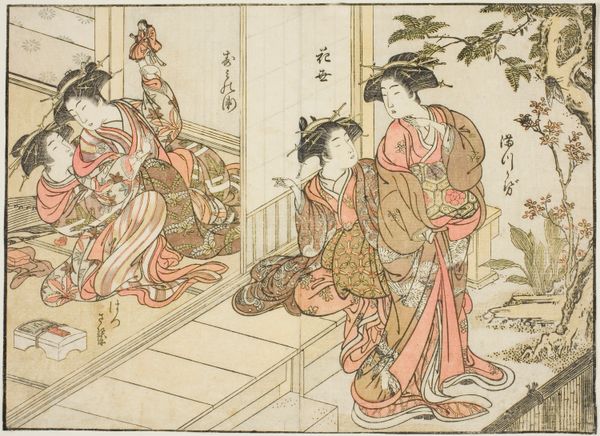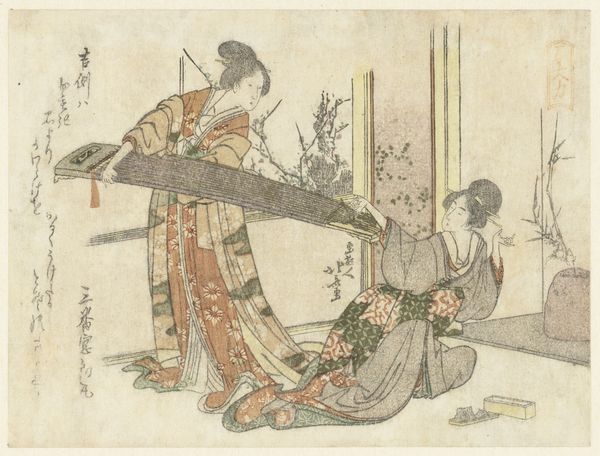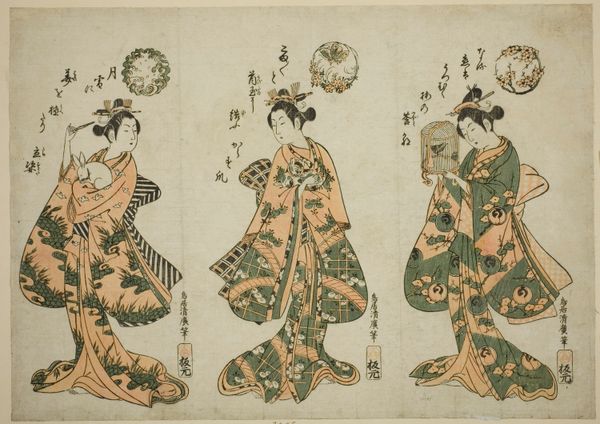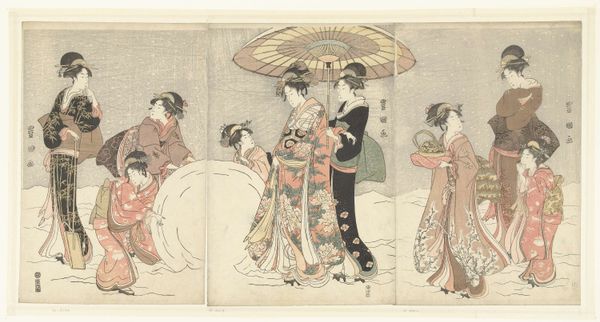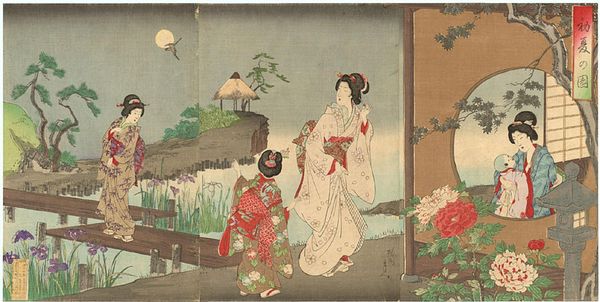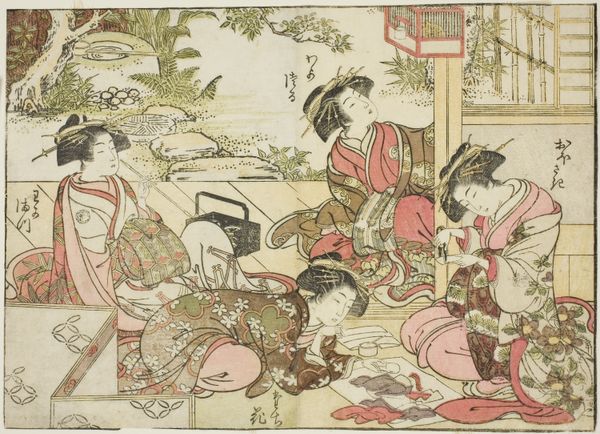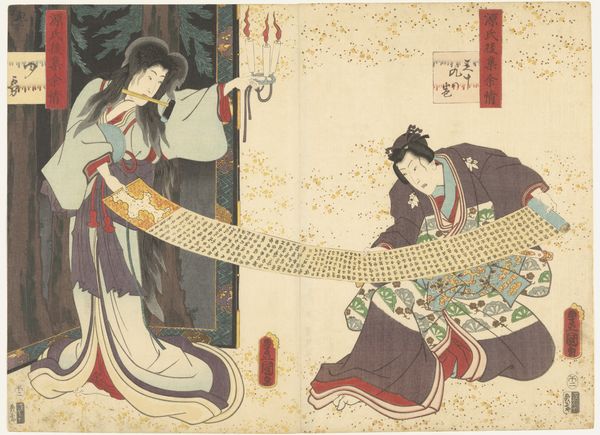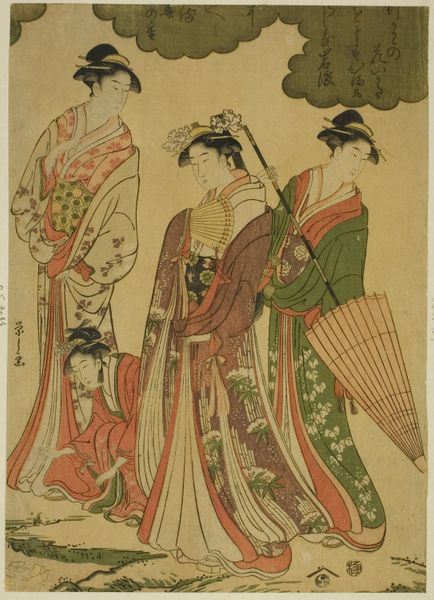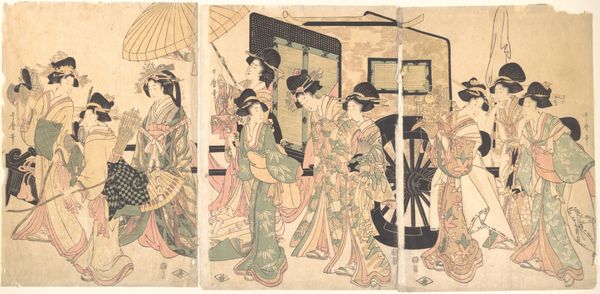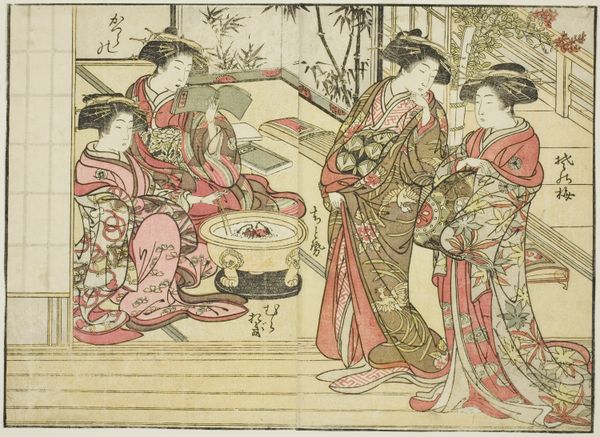
Court Ladies Dragging a Cabinet along the Floor 19th century
0:00
0:00
#
portrait
# print
#
asian-art
#
ukiyo-e
#
figuration
#
genre-painting
Dimensions: 8 1/8 x 10 9/16 in. (20.6 x 26.8 cm)
Copyright: Public Domain
Curator: Allow me to introduce Kubo Shunman's print, "Court Ladies Dragging a Cabinet along the Floor," created during the 19th century. It's currently housed at the Metropolitan Museum of Art. Editor: There’s a distinct melancholy about it, isn’t there? The delicate lines and soft colours give it a wistful, almost ephemeral quality, even with the implied labor of moving furniture. Curator: Yes, these Ukiyo-e prints often veil complex social narratives within seemingly tranquil scenes of everyday life. The elaborate garments, hairstyles, and refined posture speak to a privileged class, bound by intricate social protocols and gendered expectations within the household. The cabinet-dragging, despite the ladies' elegance, alludes to some form of domestic shift or rearrangement of power. Editor: And the plants? Two carefully cultivated potted plants feature prominently in the scene. It reads as a symbol of controlled nature, cultivated beauty... even perhaps repressed femininity? These women, like those bonsai, are carefully pruned to fit into the social garden. Curator: That's a perceptive interpretation. The potted plum blossoms atop the cabinet symbolize resilience and beauty, often associated with new beginnings and overcoming adversity during the Spring season. However, to contextualize this work historically, remember Ukiyo-e prints became vehicles for reflecting contemporary mores. There are strict Tokugawa laws that aimed to preserve rigid social hierarchy and these artistic representations often served as both affirmations and silent critiques. Editor: So, are they dragging a cabinet, or a social order along with it? The cloud patterns on the cabinet itself add to that symbolic complexity. Curator: Intriguing question. Cloud patterns often signify transition, ephemerality, something about to be blown away. Perhaps it suggests these seemingly stable domestic roles might also be somewhat impermanent. Shunman subtly incorporates visual motifs that add layers of nuanced messaging to the cultural narratives around domestic work and female roles within that society. Editor: Well, it leaves me pondering the unseen, unheard parts of these women's lives beyond what is visibly presented and officially condoned. There's a silent story of adjustment and adaptation at play here. Curator: Absolutely, examining the print through a historicized understanding allows to examine more of its multi-layered meanings embedded within cultural assumptions and official expectations during the Edo era.
Comments
No comments
Be the first to comment and join the conversation on the ultimate creative platform.
